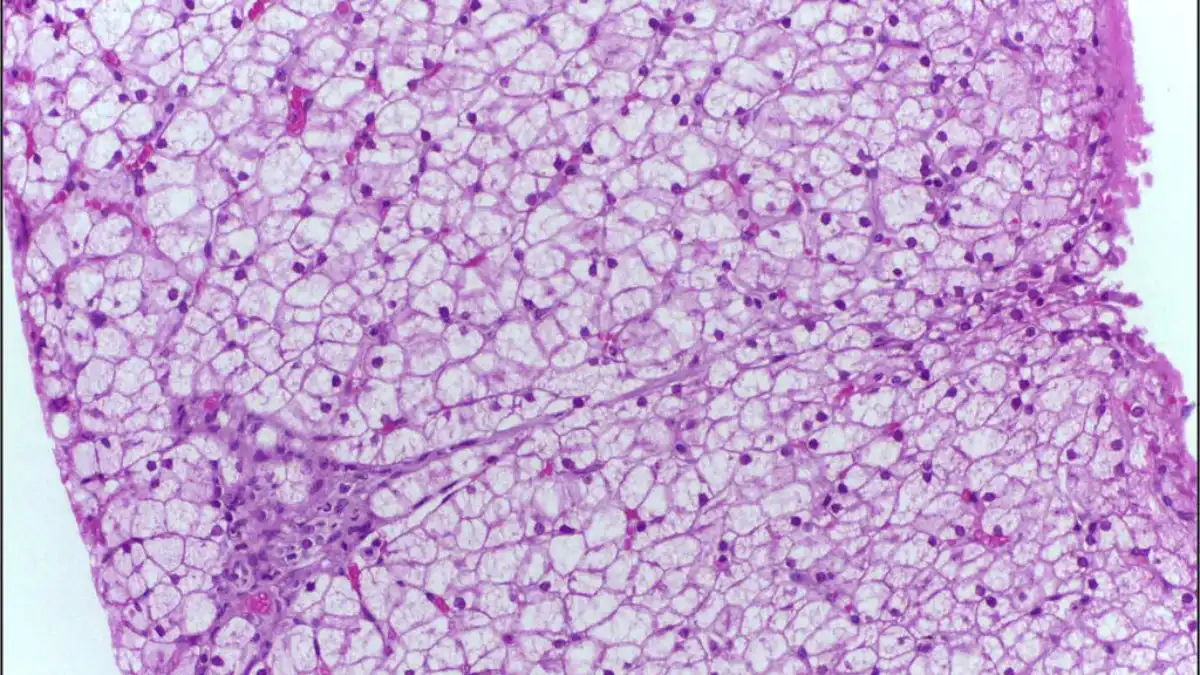Glycogen Storage Disease Type 1a


What is Glycogen Storage Disease?
Glycogen storage disease (GSD) type Ia, sometimes called von Gierke’s disease, is an inherited disease that interferes with the way the body turns food into energy. Due to a missing or impaired enzyme, the body is unable to maintain normal blood sugar levels between meals, leading to low blood sugar (hypoglycemia). As a result, both children and adults with GSD type Ia will be chronically hungry, tired, and irritable unless they eat regularly—typically every 1 to 3 hours during the day and every 3 to 4 hours at night. If their blood sugar reaches a critically low level, some may experience seizures.
Children with GSD type Ia appear normal at birth, but will begin to show symptoms of enlarged liver, swollen abdomen, delayed or stunted growth, irritability, and seizures. They will have abnormal levels of certain metabolic substances in their blood and urine. If not properly diagnosed, these children will likely experience a medical crisis within the first few months of life. Children with GSD type Ia will typically be shorter than their family members and will experience delayed puberty. Mental function is not affected by GSD type Ia.
These symptoms occur due to the lack or improper functioning of an enzyme called glucose-6-phosphatase (G6Pase). Normally, glucose (a sugar) in the food we eat is converted into a substance called glycogen that is stored in the liver. When a person does not eat for 3 to 4 hours, this glycogen will be turned back into glucose and used to stabilize sugar levels in the body. People with GSD Ia lack a component of G6Pase so they cannot turn glycogen back into glucose, and therefore they suffer from hypoglycemia.
People with GSD type Ib lack a different component of G6Pase, and experience similar symptoms. For this reason, type Ia and Ib are often spoken about as one disease: GSD type I.
The buildup of glycogen in the liver and kidneys causes them to swell, although these organs are still able to perform the majority of their functions. Benign (non-cancerous) tumors in the liver are often seen around the time of puberty. Rarely, these can become cancerous. Changes in kidney function may occur as the person reaches his or her 20s, and may include kidney stones and a decreased ability to filter waste products. In advanced cases, dialysis and/or a kidney transplant may be needed.
How Common is Glycogen Storage Disease Type 1a?
Roughly 1 in every 20,000 to 25,000 babies in the U.S. and Europe is born with some form of Glycogen Storage Disease. Of those, 25% have type I (either Ia or Ib).
How is Glycogen Storage Disease Type 1a Treated?
The treatment of GSD type Ia involves a careful monitoring of the affected person’s diet, both in frequency of meals and type of foods eaten. People with GSD type Ia should avoid foods with sucrose (table sugar), fructose (sugar from fruits), and lactose and galactose (sugars found in milk). They need to eat around the clock, typically every 1 to 3 hours during the day and every 3 to 4 hours at night, to maintain healthy blood sugar levels.
Infants and young children often need a feeding tube in order to tolerate frequent eating. They may also need to use a feeding pump at night and for emergency feedings should their blood sugar drop dangerously low. Because they must eat so frequently, children with GSD type Ia often have problems eating and swallowing food orally. They often need therapy to re-learn sucking, swallowing, and even speech.
Physicians often recommend people with GSD type Ia drink cornstarch mixed with water, soy formula, or soy milk. Cornstarch is digested slowly and therefore releases its glucose gradually, helping to safely extend the time between meals.
What is the prognosis for a person with Glycogen Storage Disease Type Ia?
With careful monitoring of diet and blood sugar levels, people with GSD can cope with their metabolic abnormalities and live into adulthood. Without close monitoring of the diet, extremely low blood sugar can be fatal. In adolescence and adulthood, people with the disease must be alert to kidney complications, high blood pressure, and/or cancerous liver tumors.
Resources
- American Liver Foundation
The leading non-profit organization providing research, education, and advocacy for people affected by liver-related diseases, including glycogen storage disease type 1a.75 Maiden Lane, Suite 603
New York, NY 10038
Phone: (800) GO-LIVER
Secondary Phone: (212) 668-1000
info@liverfoundation.org
- Association for Glycogen Storage Disease
A parent and patient-oriented support group that shares information about the disease, pushes for research, and maintains a listserv to contact other members.P.O. Box 896
Durant, IA 52747
Phone: 563-785-6038
maryc@agsdus.org
Other Names for Glycogen Storage Disease Type 1a
- Glycogen Storage Disease I
- Von Gierke Disease
- Von Gierke’s Disease
- Hepatorenal Form of Glycogen Storage Disease
- Glycogen Storage Disease Type 1a
- Glycogen Storage Disease Ia
- Glycogen Storage Disease Type I
- Glycogen Storage Disease Type Ia
- Hepatorenal Glycogenosis
- GSD1A
- Glucose-6-Phosphatase Deficiency
Take action now to assess your risk for Glycogen storage disease type 1a and your risk for passing it to your children. To get started with a JScreen genetic test, click here.
Source: Counsyl.
